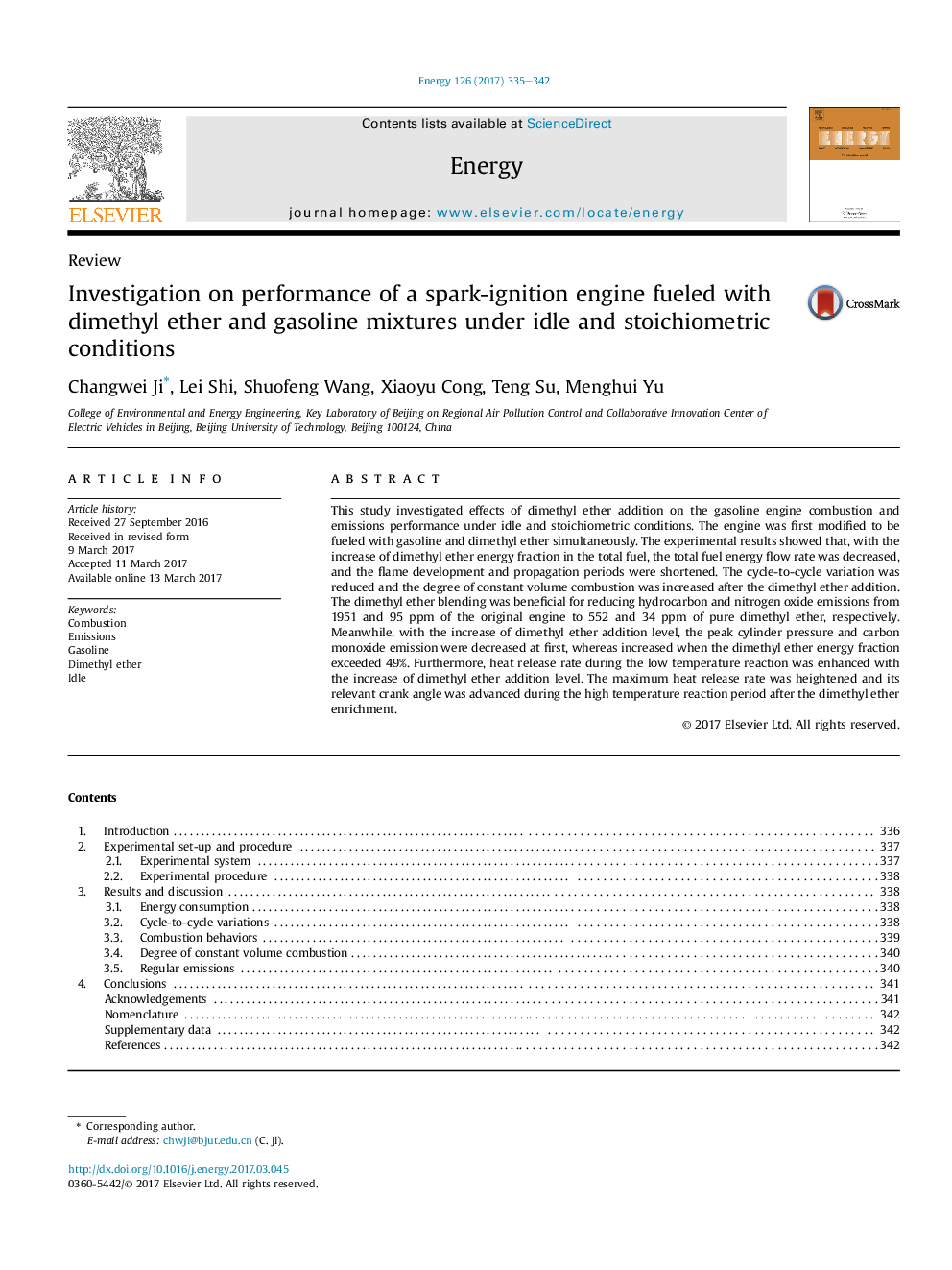| Article ID | Journal | Published Year | Pages | File Type |
|---|---|---|---|---|
| 5476989 | Energy | 2017 | 8 Pages |
Abstract
This study investigated effects of dimethyl ether addition on the gasoline engine combustion and emissions performance under idle and stoichiometric conditions. The engine was first modified to be fueled with gasoline and dimethyl ether simultaneously. The experimental results showed that, with the increase of dimethyl ether energy fraction in the total fuel, the total fuel energy flow rate was decreased, and the flame development and propagation periods were shortened. The cycle-to-cycle variation was reduced and the degree of constant volume combustion was increased after the dimethyl ether addition. The dimethyl ether blending was beneficial for reducing hydrocarbon and nitrogen oxide emissions from 1951 and 95Â ppm of the original engine to 552 and 34Â ppm of pure dimethyl ether, respectively. Meanwhile, with the increase of dimethyl ether addition level, the peak cylinder pressure and carbon monoxide emission were decreased at first, whereas increased when the dimethyl ether energy fraction exceeded 49%. Furthermore, heat release rate during the low temperature reaction was enhanced with the increase of dimethyl ether addition level. The maximum heat release rate was heightened and its relevant crank angle was advanced during the high temperature reaction period after the dimethyl ether enrichment.
Related Topics
Physical Sciences and Engineering
Energy
Energy (General)
Authors
Changwei Ji, Lei Shi, Shuofeng Wang, Xiaoyu Cong, Teng Su, Menghui Yu,
